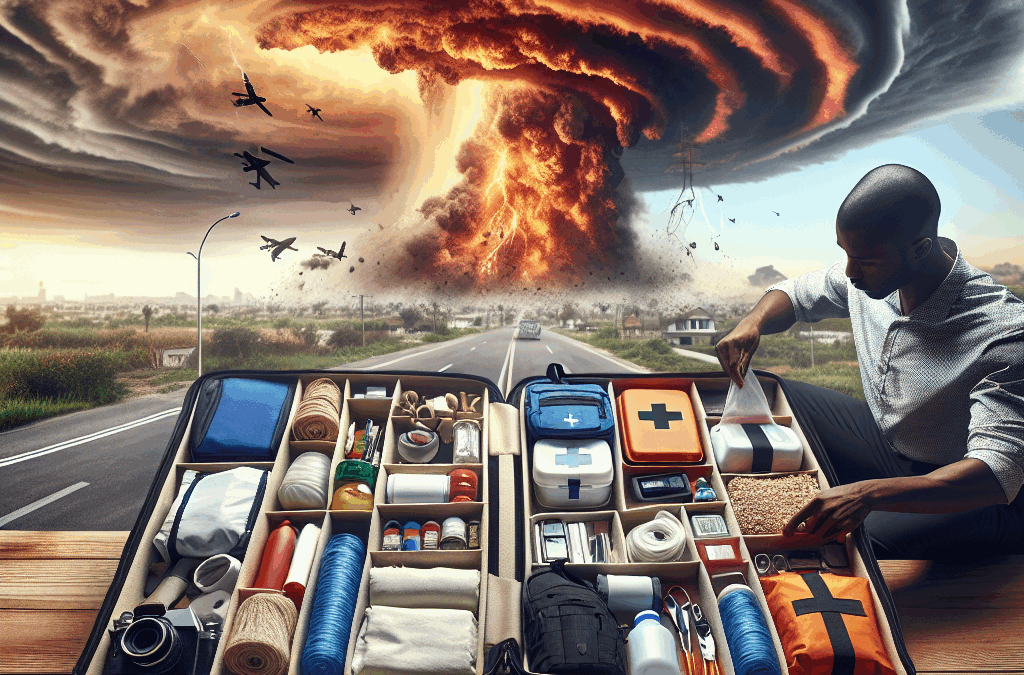In an unpredictable world, disaster preparedness is not just a luxury; it’s a necessity. Whether it’s natural disasters like hurricanes, earthquakes, or floods, or man-made emergencies such as fires or chemical spills, having a solid plan in place can make all the difference between chaos and calm. Understanding the importance of disaster preparedness empowers individuals and families to face unexpected challenges head-on.
*Essential Components of Your Disaster Preparedness Toolkit**
A comprehensive disaster preparedness toolkit is your first line of defense. Start by including basic supplies: water (one gallon per person per day for at least three days), non-perishable food items that can sustain you and your family for similar durations, and a flashlight with extra batteries. Consider adding a first-aid kit stocked with essential medications and supplies. Don’t forget personal hygiene items to keep everyone comfortable during prolonged emergencies.
Next on the list are important documents: copies of identification, insurance policies, medical records—anything critical that could be challenging to replace quickly. Pack these in waterproof bags to protect them from potential damage.
Finally, consider tools that can assist during recovery phases—multi-tools for repairs and duct tape for quick fixes are invaluable. And if you have pets, ensure their needs are met too; include food supplies and any necessary medications in your kit.
*Customizing Your Toolkit for Specific Emergencies**
One size does not fit all when it comes to disaster preparedness. Tailor your toolkit based on the unique risks associated with your geographic area. For example, if you live in an earthquake-prone region, add sturdy shoes and helmets to protect against falling debris. In hurricane zones, consider investing in tarps or plastic sheeting to cover windows or doors effectively.
Additionally, think about family members’ specific needs—infants may require formula while seniors might need specialized medications or mobility aids included in the kit. The key is recognizing that preparation looks different for everyone but should always prioritize safety and accessibility.
Thank you for reading this post, don't forget to subscribe NOW for FREE!
*Creating an Effective Communication Plan**
When disaster strikes, ensuring effective communication is paramount. Develop an emergency contact list that includes local authorities as well as family members who may be separated during an event. Identify multiple methods of communication—texts may get through when calls cannot due to network congestion.
Establish meeting points where everyone knows to go if separated. Make sure each family member understands this plan by practicing it regularly so it becomes second nature when speed matters most.
*Regular Maintenance: Updating and Practicing Your Preparedness Plan**
Having a toolkit is only half the battle; regular maintenance ensures its effectiveness over time. Set reminders every six months to check expiration dates on food items and replace anything that has been used or damaged. Rotate stock so nothing goes unused past its prime.
Moreover, practice your disaster response plans together as a family unit—drill scenarios as if they were real emergencies. This will help reinforce memory recall under pressure while also highlighting any gaps in your preparations that need addressing.
*Community Resources: Engaging with Local Emergency Services and Support Networks**
Finally, don’t overlook community resources! Engage with local emergency services—they often provide valuable training courses on CPR or first aid which can enhance your skill set beyond mere survival supplies. Joining community groups focused on preparedness can offer access to additional resources while building networks of support among neighbors during crises.
By being proactive rather than reactive when it comes to disaster preparedness, you not only safeguard yourself but also contribute positively to your community’s resilience against unforeseen events. So take those steps today; after all, peace of mind starts with preparation!






